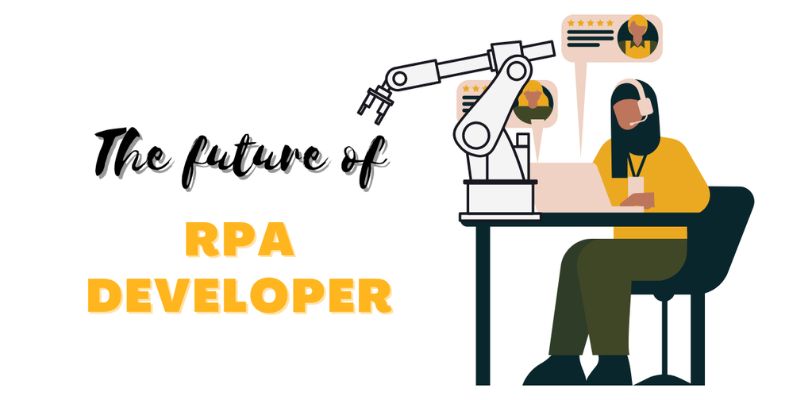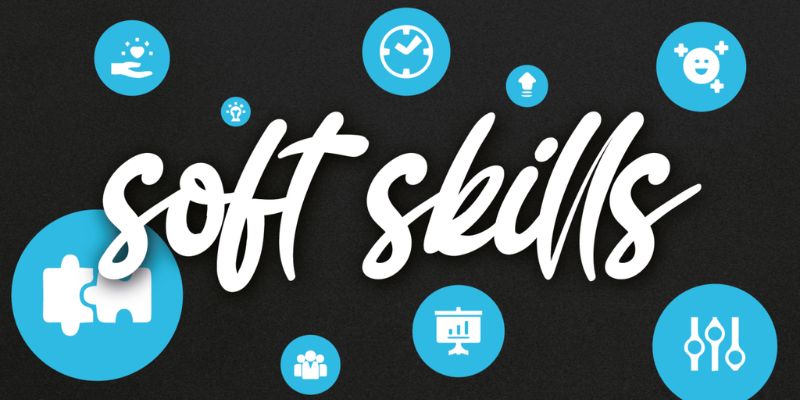Robotic Process Automation (RPA) isn’t just a buzzword—it’s a game-changer. Imagine walking into a workplace where bots handle the dull stuff while people focus on what they do best: being creative and solving complex problems. The impact of RPA on the future of work will be massive. Think of it as your new teammate, one that’s here to stay. This isn’t about robots taking jobs; it’s about reshaping them. In this post, we dive into how RPA is making waves, from boosting efficiency to literally rewriting job descriptions. Ready to see how? Let’s get started.
Embracing RPA: The Drive for Efficiency and Competitiveness
Realizing Efficiency Gains from RPA
Robotic Process Automation is changing how we work. It boosts speed and cuts errors in our daily tasks. For instance, RPA can check data faster than any human. This means we can spend time on stuff that needs a human touch, like talking to customers or thinking of new ideas. It’s like having a helper robot that never gets tired.
Think of a robot sorting your emails. You can do more important work instead. RPA tools take care of the boring stuff, so your job gets easier. You become more productive. It’s a win for you and your company both.
RPA Adoption in Businesses
Now, let’s dive into how firms are using RPA. Lots of businesses are jumping on board. They see that RPA can save time and money. When a robot does the easy work, you can focus on the tough problems.
Business leaders ask, “How does RPA work?” It’s software that mimics what you do on a computer. It logs in, moves files, fills out forms—just like you, but quicker. So companies need fewer people for those tasks. They can use their staff for smarter work that robots can’t do.
RPA helps firms stay ahead of the game. It’s like having a super-fast teammate who’s good at things we find dull. This keeps businesses sharp and fast. It’s not just about saving a few minutes here and there. It’s about changing the whole way work gets done.
Using RPA makes firms more competitive. It lets them react quickly to changes, like new laws or market shifts. And when customers get faster service, they’re happier. They might tell their friends or come back for more. That’s good for business.
In a nutshell, Robotic Process Automation is a game-changer. It’s reshaping our jobs and making businesses run better. It’s exciting to see how it will help us do more with our time at work. Robots are our new teammates, and together, we’re set for success.
RPA Altering the Employment Landscape
RPA Redefining Job Roles and Skill Set Requirements
Robotic Process Automation is changing work fast. It swaps old tasks for new ones. RPA isn’t a robot army taking over jobs. It’s software bots doing dull, repeat work, so people can focus on what they’re good at – being creative, solving problems, and working with others.
Let’s talk about the work RPA touches. It’s usually stuff that’s boring or easy to mess up. Like entering data, or moving info from one place to another in a computer. These are the jobs RPA can take on.
You might think, “But what about the people who did those jobs?” That’s where the cool part comes in. RPA is making new jobs while it changes old ones. When bots handle the dull stuff, people can learn to boss the bots around or dig into work that needs a human touch.
For folks working with RPA, knowing how to use RPA software and tools is key. They need to know how the software thinks and works. That’s a skill you can learn, and it’s getting more important as more businesses use RPA. Learning this can keep your job safe and make you more valuable at work.
Career Opportunities and Workforce Training in RPA
So, what’s out there for you if you want to step into the RPA world? Quite a lot, honestly! First, there are the tech-savvy jobs where you design and set up the RPA systems. But even if you’re not a tech geek, companies need people who know how their business runs to guide the RPA work.
Training for RPA work is important, too. Schools and training places are starting to teach folks how to rock at RPA. They cover things like how to spot what tasks the bots can do and how to keep making sure the software does the job right.
RPA isn’t only changing how we work; it’s offering a ticket to stay valuable in the job market. It’s a chance to avoid tech taking your job by teaming up with the bots instead.
But it’s more than just staying in work. Folks need to feel good about their jobs too, right? When RPA handles the boring parts, people often feel better about coming to work. They can use their brains more, and that’s usually a good thing for job happiness.
Also, RPA can open doors for everyone. It’s great for folks looking for a fair shot at work because it’s not about who you are but what you can do with the tech. RPA helps make the workplace a level field for all.
And hey, remember the smart bots we talked about earlier? They can make companies more money by saving time and cutting costs. That’s huge. So, RPA is like a win-win. It’s good for both the folks at work and the business as a whole.
Ethical and Strategic Dimensions of RPA Integration
Balancing the Ethics of Workplace Automation
When we bring robots into our jobs, we face big questions. Can we do it right? Should we even do it at all? These are tough questions! As we put RPA into our work, we need to think about the people who work there. Nobody wants to lose their job to a machine. That’s why it’s my job to help companies put in RPA and keep our work fair. We have to make sure everyone can stay aboard this fast-moving tech train. We need to care about each worker and give them new skills for tomorrow’s jobs.
Strategic Business Planning with RPA
RPA is changing how we work, fast like a rocket. So, we need smart plans to use RPA well. We want our businesses to grow, to be the best. This means using RPA to do more, quicker, with less mistakes. It’s all about getting better without leaving anyone behind. We try to find the best spots to use RPA, then train our people for new roles. This helps our workers and our company. It’s a win-win! The goal? Use RPA to make things better, for our wallets and for our daily work life.
When we put RPA into a company, we look at many things. How will it change the jobs we have? What new jobs can we make? And the big goal – how can we use RPA to make work better for all? If we do it right, RPA will help everyone in the company. The trick is getting it just right. This starts with planning and ends with action. It’s like building a bridge, from the work today to our dream jobs tomorrow. When we build this bridge right, RPA makes every worker stronger. And our businesses? They soar!
Looking at RPA, we know it’s strong stuff. It can totally flip how we work. And that can be good or scary. But we have the power to steer RPA towards good. How? By thinking ahead, making plans that care for our workers. It’s like a game of chess. We don’t make moves just for today. We look at the whole board, thinking about future moves. That’s how we get ahead.
By using RPA, we aim to make work fun and less of a chore. We can leave the dull stuff to the bots. And our people? They get to tackle the cool challenges. So, as we roll out RPA, we’re careful. We want to do it with heart. We want to take our teams to new heights, together. That’s the sign of a job well done with RPA. We’re setting the stage for work that’s more than just a paycheck. It’s about making a splash, with bots by our side!
RPA’s Role in Shaping Future Work Environments
Enhancing Productivity and Job Satisfaction with RPA
Robotic Process Automation (RPA) is changing how we work. It takes over dull tasks we hate. Our days get more interesting. We can focus on creative work. This makes us happier at our jobs.
RPA tools do repetitive work fast and without errors. They work day and night. They don’t get tired or make mistakes. This means we can do more work in less time. This is great for businesses.
But what about the people? Some fear losing their jobs to robots. But RPA creates new jobs too. We need folks who can manage these RPA tools. We also need people to find smart ways to use them in work.
The cool part is, RPA isn’t just for techies. Many types of jobs can use RPA. For example, in HR it can sort resumes. In customer service, it can handle simple questions. RPA supports people by doing the grunt work.
Now let’s talk job satisfaction. Imagine you have a robot helper. It does the part of your job you like least. You get to solve problems and think of new ideas. Wouldn’t that make your workday better? That’s what RPA can do.
RPA’s Impact on Workforce Diversity and Work-Life Balance
RPA is a win for diversity too. It levels the playing field. It does not care where you are from or what you look like. The key is knowing how to work with RPA tools.
Anyone can learn about RPA. This means more chances for lots of people. Moms coming back to work can learn RPA skills. So can people from small towns. They can get good jobs that were once out of reach.
The RPA learning curve is not too steep either. Lots of companies need RPA skills. Some even train people in RPA. This means RPA can help you grow in your career.
Talking about work-life balance, RPA is really cool. It does tasks that can be boring or tough on our bodies. This gives us more time. Time to be with family. Time to rest or play.
Some worry that RPA will take jobs away. But RPA changes jobs more than it replaces them. It can take over tasks. People can move to roles that need a human touch.
RPA also helps people do jobs from anywhere. This means less time commuting. More time living. It works with you to make your job fit your life, not the other way around.
In summary, RPA is not just another tech buzzword. It’s a game changer. It reshapes our work in ways that help us. It makes jobs more varied and rewarding. It helps people from all walks of life. It also makes room for life outside of work. RPA is really about making work better for people. It’s about building a future where our jobs give us joy and freedom.
We’ve explored how robotic process automation (RPA) boosts efficiency and helps businesses stay ahead. We’ve seen its strong influence on job roles, requiring new skills and creating new career paths. RPA isn’t just tech’s new toy; it’s a major shift in our work lives.
Using RPA wisely and ethically is key. We’ve discussed how to blend RPA into business plans and uphold strong moral standards. This tech can make our jobs more fulfilling and support better work-life balance for a diverse workforce.
Embrace RPA, and let’s ride the wave of smart change together. Stay sharp, keep learning, and get ready for an exciting future. RPA is here to stay and it’s our ally on the path to success!
Q&A :
How is RPA expected to shape the future workplace?
Robotic Process Automation (RPA) is anticipated to revolutionize the future workplace by streamlining repetitive tasks, which allows human workers to focus on more complex and strategic work. As RPA tools handle monotonous and time-consuming processes, businesses are likely to witness increased efficiency, accuracy, and productivity, fundamentally altering the job landscape and creating opportunities for new roles centered on managing and improving automation technologies.
Can RPA lead to job displacement, and how can workers prepare?
While RPA can indeed lead to the displacement of jobs that are heavily based on repetitive tasks, it also opens avenues for upskilling and reskilling opportunities. Workers can prepare by focusing on developing soft skills like problem-solving, creative thinking, and emotional intelligence, as well as technical skills relevant to managing RPA tools, such as programming and systems analysis, to remain competitive and employable in an automation-forward job market.
What industries are set to be most impacted by RPA?
RPA has a broad range of applications and is set to impact numerous industries including finance, healthcare, manufacturing, and customer service. In the finance sector, for example, RPA is used for transaction processing and compliance monitoring. Healthcare may use RPA for patient data management, while manufacturing industries can automate supply chain operations. Each of these industries will experience significant shifts in operational dynamics and workforce requirements as RPA becomes more entrenched.
How does RPA contribute to increased productivity in the workplace?
RPA contributes to increased productivity by executing repetitive and routine tasks much faster and with higher accuracy than a human worker. This not only reduces the incidence of errors but also frees up human employees to take on more valuable tasks that require complex decision-making, creativity, and interpersonal skills. With RPA bearing the brunt of mundane tasks, organizations can optimize their workflow, reduce operational costs, and enhance overall productivity.
What strategic advantages does RPA offer to businesses?
RPA offers several strategic advantages including cost reduction, scalability, improved accuracy, and compliance. By automating routine processes, businesses can significantly cut down on labor costs and minimize the probability of human error. Additionally, RPA allows for easy scalability, enabling businesses to adjust quickly to changing demand without the need to hire additional staff. RPA also supports compliance efforts by maintaining precise records of all automated processes, ensuring that businesses can demonstrate adherence to regulations with ease.






